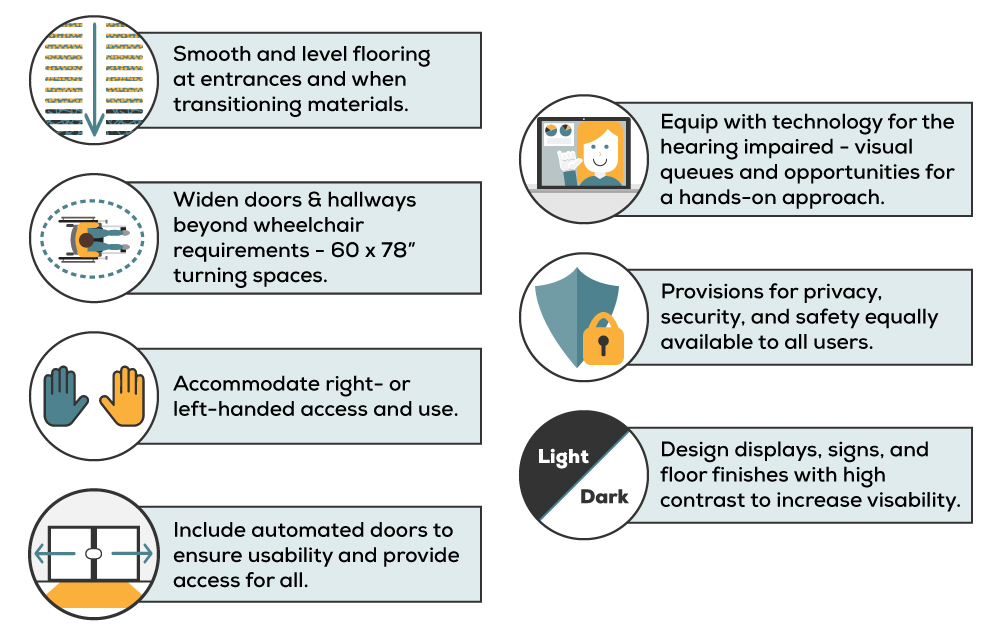7 Principles of Universal Design for Learning
-
Category
Innovation -
Posted By
Cindy McLoed -
Posted On
Mar 12, 2018
Universal Design for Learning (UDL) is the framework, backed by research, that guides the development of learning environments to accommodate individual learning differences.
Universal Design for Learning recognizes the different needs that are unique to those with visual, hearing, motor, or learning/cognitive disabilities while also designing for able-bodied users as well. UDL provides us, as designers, with guidelines to create an environment that is built for all users to learn, play, and develop together while reducing limitations.
- Equitable Use: provides the same means of use for all users with diverse abilities, and design is appealing to everyone
- Flexibility in Use: design to accommodate a wide range of preferences and abilities
- Simple & Intuitive: easy to understand and use regardless of the user’s experiences, knowledge, language skills, or current concentration level
- Perceptible Information: communicates necessary info effectively, regardless of surrounding conditions or sensory abilities
- Tolerance for Error: minimizes hazards and adverse consequences of unintended actions
- Low Physical Effort: efficient and comfortable while minimizing chance of fatigue
- Size & Space for Approach & Use: design provides appropriate size and space regardless of the user’s body size, posture, or mobility
Some of the most basic ways we design with these seven principles in mind:

Need help making sure your project meets UDL standards? Ask our experts!




